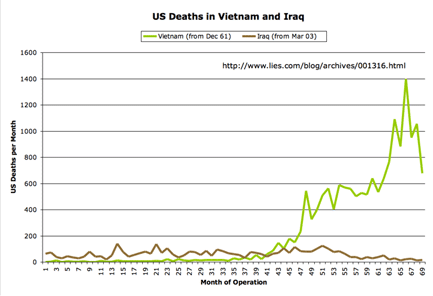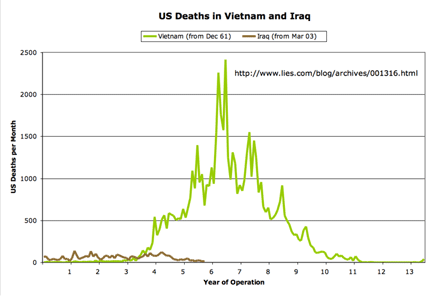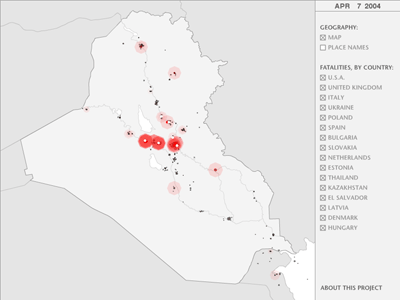Your homework for today: read Glenn Greenwald’s item on the reporting that was done back in 2001 on the anthrax letters that had everyone freaked out for a time: Vital unresolved anthrax questions and ABC News. (Those who want to play along without doing all that reading can skate by with Kevin Drum’s Cliff Notes summary: Bentonite. But you better hope the teacher doesn’t call on you.)
One thing that bugs me about all the reporting over the last few days is the readiness of the media to accept that Bruce Ivins’ death was a suicide. There sure have been a lot of suicides over the last few years of people about to come to trial for what potentially could be blockbuster charges with major repercussions in Washington. And I realize that it’s Hollywood, but I can’t help thinking of that scene from Michael Clayton where the two operatives kill Tom Wilkinson’s character and make it look like a drug overdose.
I know that most conspiracy theories are ridiculously wrong. But not all of them. I think anyone who’s honest about the limits of human wisdom would admit that there must be a smallish subset of widely-held conspiracy theories that are essentially correct. (Just as there are almost certainly a fair number of criminal conspiracies that have never been suspected, even by the tinfoil-hat crowd.) But which ones are correct? I don’t know. And neither does anyone (well, almost anyone) else.
That’s one reason why I’m fairly tolerant toward the 9/11 truthers I come across. I think they’re almost certainly in the “ridiculously wrong” crowd. But I respect their willingness to endure the ridicule they get in pursuit of the truth. I don’t believe 9/11 was an inside job; I think the evidence on that is pretty clear. I think it’s unlikely that Flight 93 was actually shot down, as opposed to crashing when the passengers rushed the cockpit, but I’m less confident of that.
The real world is a fairly complex place, and it doesn’t always slice up as neatly as we’d like it to. For example, I’m pretty sure O.J. killed Nicole and Ronald Goldman — but I also think it’s a better-than-even chance that Mark Fuhrman jumped the fence at the compound to plant the bloody glove. If believing in O.J.’s guilt makes you reflexively dismiss anyone who says Fuhrman might have planted evidence, I think you’re not being honest about how the world works.
If there’s one thing that the history of scientific discovery teaches, it’s that if your epistemology and methods are good enough to allow you to discover a hitherto unsuspected truth, in many (most?) cases that truth will turn out to be something that appears fairly outlandish from the perspective of someone who hasn’t run your experiments or examined your data. People put too much faith in Occam’s Razor. If the available evidence is insufficient to illuminate the true state of affairs, Occam’s Razor doesn’t elevate the quality of your data. It may make you a smidgeon less likely to be wrong. But it’s no substitute for actually knowing enough to be right.
Bruce Ivins almost certainly knew some really important things about the identity and motivations of the 2001 anthrax attacker(s) (even if it was only that he wasn’t one of them), but sadly, that knowledge died with him. Meanwhile, the folks at ABC News who reported that “four well-placed and separate sources” told them that tests had found traces of bentonite in the 2001 anthrax letters – a fact we now know to be false – also possess really important information that bears on how the government responded to those attacks. It would be really nice if they’d share that information with the rest of us.
Update: It’s a few days later, and there has (obviously) been a bit of news since then, with the FBI laying out something approximating a prosecution’s opening statement against Ivins yesterday (though in the absence of an actual criminal process, or a defense, I’m not especially comfortable basing any conclusions on it). Glenn Greenwald has continued to post items about the story, and this morning I got an email from someone named Simon Owens who runs a site named Bloggasm (ew; sounds kind of messy) where he’s posted an item that includes details from interviews he did with Greenwald and others about ABC’s original bentonite story. He (Owens) is looking for some links, so here you go: Should ABC News reveal its anonymous sources?



